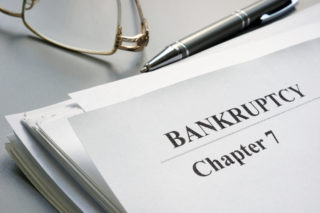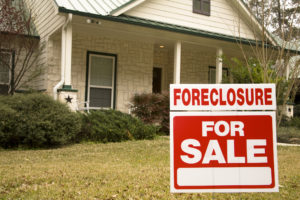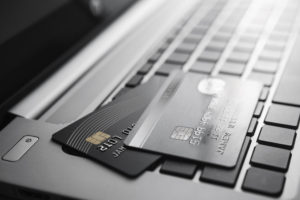 Chapter 13 bankruptcy provides relief only to individuals with regular income. This Chapter is most frequently used by debtors who have sufficient disposable monthly income to make some payments over time to their creditors. Chapter 13 debtors frequently have enough equity in their residence that, if they were to file for Chapter 7, the residence
Chapter 13 bankruptcy provides relief only to individuals with regular income. This Chapter is most frequently used by debtors who have sufficient disposable monthly income to make some payments over time to their creditors. Chapter 13 debtors frequently have enough equity in their residence that, if they were to file for Chapter 7, the residence
Secured Creditors
Bradley’s Bankruptcy Basics: Chapter 11 Bankruptcy — Reorganization
 Chapter 11 bankruptcy cases are most frequently filed by businesses. However, certain high-earning individuals whose debts are above the statutory debt limits to qualify for Chapter 13 can also file for Chapter 11 relief. In Chapter 11 cases, the debtor retains control of its operations as a debtor in possession (DIP) and has the benefits…
Chapter 11 bankruptcy cases are most frequently filed by businesses. However, certain high-earning individuals whose debts are above the statutory debt limits to qualify for Chapter 13 can also file for Chapter 11 relief. In Chapter 11 cases, the debtor retains control of its operations as a debtor in possession (DIP) and has the benefits…
Bradley’s Bankruptcy Basics: Chapter 7 Bankruptcy — Liquidation
 Chapter 7 bankruptcy cases are straight liquidations sought by debtors who wish to have most or all of their debts discharged. In Chapter 7 cases, the Chapter 7 trustee obtains control over the debtor’s assets and evaluates whether any equity exists that would offset the costs of selling those assets. If the bankruptcy estate will…
Chapter 7 bankruptcy cases are straight liquidations sought by debtors who wish to have most or all of their debts discharged. In Chapter 7 cases, the Chapter 7 trustee obtains control over the debtor’s assets and evaluates whether any equity exists that would offset the costs of selling those assets. If the bankruptcy estate will…
Bradley’s Bankruptcy Basics: The 6 Key “Players” in Bankruptcy Cases
 Bankruptcy cases differ from typical lawsuits in a variety of ways, including the parties involved. Whereas standard lawsuits generally involve a plaintiff and a defendant, bankruptcy cases have a different cast of “players,” including the debtor or debtor in possession, creditors, the bankruptcy trustee (i.e., Chapter 7 trustee, Chapter 13 trustee, etc.), committees, and the…
Bankruptcy cases differ from typical lawsuits in a variety of ways, including the parties involved. Whereas standard lawsuits generally involve a plaintiff and a defendant, bankruptcy cases have a different cast of “players,” including the debtor or debtor in possession, creditors, the bankruptcy trustee (i.e., Chapter 7 trustee, Chapter 13 trustee, etc.), committees, and the…
Bradley’s Bankruptcy Basics: A Multimedia Series
 Bankruptcy. The arrival of that notice stating a customer has filed for bankruptcy can evoke less-than-ideal responses: forwarding the notice to someone else who might know what to do with it (resulting in the notice ending up in a forever loop of being forwarded along); immediately writing off the account and cutting your losses; or,…
Bankruptcy. The arrival of that notice stating a customer has filed for bankruptcy can evoke less-than-ideal responses: forwarding the notice to someone else who might know what to do with it (resulting in the notice ending up in a forever loop of being forwarded along); immediately writing off the account and cutting your losses; or,…
Supreme Court Holds Mere Retention of Bankruptcy Debtor’s Property Is Not a Violation of the Automatic Stay but More Questions Remain
 For the past few years, the federal circuit courts have struggled with the issue of whether a creditor retaining possession of bankruptcy estate property violates the automatic stay. For example, is a creditor required to automatically turn over a vehicle as soon as the bankruptcy petition is filed, or can the creditor retain possession of…
For the past few years, the federal circuit courts have struggled with the issue of whether a creditor retaining possession of bankruptcy estate property violates the automatic stay. For example, is a creditor required to automatically turn over a vehicle as soon as the bankruptcy petition is filed, or can the creditor retain possession of…
Bankruptcy Court Upholds Foreclosure Sale That Occurred Between Bankruptcy Case Dismissal and Subsequent Reinstatement
 Frequently, borrowers file for bankruptcy at the 11th hour to halt foreclosure sales. Once a petition for bankruptcy relief has been filed, secured creditors must cease their collection efforts to avoid violating the automatic stay. However, the automatic stay terminates upon a debtor’s dismissal and closure of the bankruptcy case. A Pennsylvania bankruptcy court…
Frequently, borrowers file for bankruptcy at the 11th hour to halt foreclosure sales. Once a petition for bankruptcy relief has been filed, secured creditors must cease their collection efforts to avoid violating the automatic stay. However, the automatic stay terminates upon a debtor’s dismissal and closure of the bankruptcy case. A Pennsylvania bankruptcy court…
CFPB Approves Synchrony’s “Dual-Feature Credit Card”
 On December 30, 2020, the CFPB approved Synchrony Bank’s application to offer a “dual-feature credit card” (DFCC) under the CFPB’s Compliance Assistance Sandbox (CAS) policy. According to Synchrony’s application, the DFCC allows consumers to graduate from a secured-use credit card to an unsecured feature after at least one year and if the customer satisfies…
On December 30, 2020, the CFPB approved Synchrony Bank’s application to offer a “dual-feature credit card” (DFCC) under the CFPB’s Compliance Assistance Sandbox (CAS) policy. According to Synchrony’s application, the DFCC allows consumers to graduate from a secured-use credit card to an unsecured feature after at least one year and if the customer satisfies…
Four Significant Changes to Consumer Bankruptcy Included in the Consolidated Appropriations Act, 2021
 On December 21, 2020, Congress passed the Consolidated Appropriations Act, 2021 (CAA 2021). Similar to the March 2020 CARES Act, several temporary changes to the Bankruptcy Code are included in Title X of the CAA 2021. Below, we examine four of the CAA 2021’s most significant changes to consumer bankruptcy laws. These changes are…
On December 21, 2020, Congress passed the Consolidated Appropriations Act, 2021 (CAA 2021). Similar to the March 2020 CARES Act, several temporary changes to the Bankruptcy Code are included in Title X of the CAA 2021. Below, we examine four of the CAA 2021’s most significant changes to consumer bankruptcy laws. These changes are…
Top 10 Changes to Consumer Bankruptcy Proposed in the Consumer Bankruptcy Reform Act of 2020
 On December 9, 2020, Congressional Democrats, including Elizabeth Warren (D-Mass.) and Jerrold Nadler (D-N.Y.), proposed sweeping legislation that would overhaul consumer bankruptcy law. The proposed changes generally make it easier for consumers to access the bankruptcy system and discharge their debts. Below is a discussion of 10 critical changes proposed in the Consumer Bankruptcy Reform…
On December 9, 2020, Congressional Democrats, including Elizabeth Warren (D-Mass.) and Jerrold Nadler (D-N.Y.), proposed sweeping legislation that would overhaul consumer bankruptcy law. The proposed changes generally make it easier for consumers to access the bankruptcy system and discharge their debts. Below is a discussion of 10 critical changes proposed in the Consumer Bankruptcy Reform…